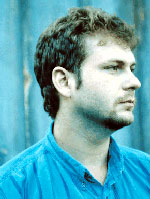http://www.lockheedmartin.com/wms/findPage.do?dsp=fec&ci=18298&rsbci=0&fti=111&ti=0&sc=400
LOCKHEED MARTIN TEAM COMPLETES GPS III SYSTEM DESIGN REVIEW ON SCHEDULE
KING OF PRUSSIA, Pa., April 5, 2007 -- Lockheed Martin [NYSE: LMT] announced today that it has successfully completed on-schedule a system design review of the U.S. Air Force's next generation Global Positioning System Space Segment program, known as GPS Block III.
More than 100 representatives from the Defense Department, including members of the U.S. Air Force Space and Missile Systems Center, Space Command and Strategic Command, as well as the Department of Transportation and Federal Aviation Administration, recently attended a five-day system design review (SDR) at Lockheed Martin in Valley Forge, Pa.
The review, which represented a significant interim milestone under a $49 million contract awarded in Nov. 2006, validated the detailed design of the GPS Block III system to ensure it meets military and civil user requirements. The Air Force is expected to award a multi-billion dollar development contract to a single contractor team in late 2007.
"The team executed on schedule an outstanding design review, demonstrating our technological, systems engineering and integration strengths for achieving mission success on this critical initiative," said Joanne Maguire, executive vice president of Lockheed Martin Space Systems. "We are extremely pleased with the government participation and the successful outcome of this important review and stand ready to proceed with the next development phase of the GPS III program."
GPS Block III will enhance space-based navigation and performance and set a new world standard for positioning and timing services. The program will address the challenging military transformational and civil needs across the globe, including advanced anti-jam capabilities and improved system security, accuracy and reliability.
During the review, the team reviewed in detail its planned architecture and design approach for the system and summarized results of risk reduction efforts and the team's experience on the government's Block IIR and IIR-M programs. A highlight of the review was an extensive exhibit hall that featured demonstrations of key technologies and displays summarizing performance, mission scenarios, and user benefits.For GPS III, the team of Lockheed Martin, ITT and General Dynamics is building on its proven record of providing progressively advanced spacecraft for the GPS constellation. The team designed and built 21 Block IIR satellites for the Global Positioning Systems Wing, Space and Missile Systems Center, Los Angeles Air Force Base, Calif. Eight of the spacecraft, designated Block IIR-M, were successfully modernized and delivered to the customer to enhance operations and navigation signal performance for military and civilian GPS users around the globe.
Headquartered in Bethesda, Md., Lockheed Martin employs about 140,000 people worldwide and is principally engaged in the research, design, development, manufacture, integration and sustainment of advanced technology systems, products and services. The corporation reported 2006 sales of $39.6 billion.

















 As such, AAG and others have teamed up to file an
As such, AAG and others have teamed up to file an 








